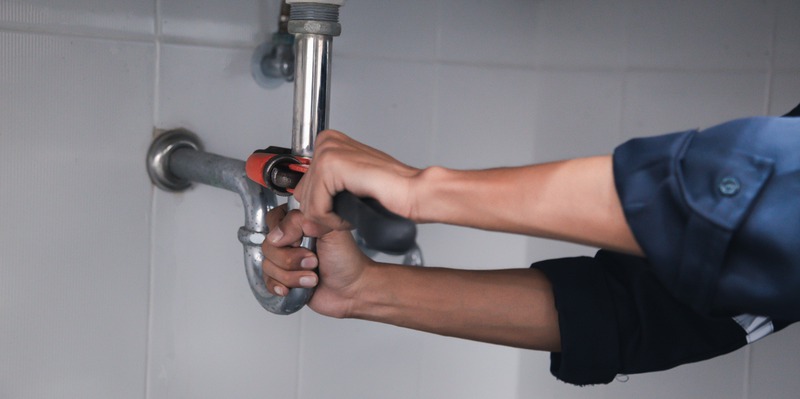Plumbing issues can sneak up on anyone, causing inconvenience and potential damage if not addressed promptly. Knowing a few quick fixes can help to manage these common problems in households. Even if professional help might be needed down the line, having some basic fixes under your belt can save both time and stress. Here’s a look at some practical solutions to everyday plumbing dilemmas.
Quick Fixes for Common Plumbing Problems
For the typical homeowner or renter, understanding how to address common plumbing problems can be a lifesaver. Here are some practical ways to tackle these issues swiftly and effectively.
Tackling a Leaky Faucet
A leaky faucet, though seemingly minor, can end up wasting a lot of water over time. Here are steps to fix it:
-
Shut off the water supply to the faucet to avoid further leakage.
-
Carefully remove the handle and any decorative parts to reach the valve.
-
Inspect and replace the worn-out rubber washer or O-ring.
-
Reassemble the faucet components and turn the water back on to check.
This simple process can decrease water wastage and ease that persistent drip sound.
Addressing Clogged Drains
Clogged drains can occur in bathtubs, sinks, or showers, and usually, they’re due to buildup over time. Here’s how to resolve it:
-
Start with a plunger to help loosen any obstruction.
-
Pour boiling water down the drain to dissolve mild blockages of grease or soap.
-
For a natural solution, use a mixture of baking soda and vinegar.
If the problem persists, a chemical drain cleaner or a plumbing snake might be necessary to clear tougher blockages.
Stopping a Running Toilet
A running toilet can be annoying and can cause a spike in your water bill. Address this issue by:
-
Opening the toilet tank and checking the flapper valve at the bottom.
-
Ensure the chain connecting the handle to the flapper is not tangled.
-
Replace the flapper if it appears worn or damaged.
-
Adjust the float ball or cup to prevent excessive water flow.
Timely intervention can stop the running water and save both water and money.
Handling Low Water Pressure
Low water pressure can make daily tasks more difficult. Here are a few things to check:
-
Clean the faucet aerators and showerheads, which may become clogged with mineral deposits.
-
Check for leaks in the plumbing system that might be reducing pressure.
-
Ensure that the main water shutoff valve is fully open to allow optimal flow.
In persistent cases, this may require professional investigation to ensure there are no underlying issues in the plumbing infrastructure.
Managing Water Heater Issues
Issues with a water heater can disrupt daily routines, particularly during colder months. Try the following:
-
Verify that the thermostat is set to an appropriate temperature, and confirm the power or pilot light is functional.
-
Flush the tank periodically to eliminate sediment buildup and improve efficiency.
-
Check for any leaks in connections or joints.
If these steps don’t resolve the problem, considering professional water heater repair in Holland might be necessary to maintain an efficient and reliable water supply.
Eliminating Drain Odors
Persistent odors from drains can be unpleasant and indicate deeper issues. Here’s how to tackle them:
-
Pour water into seldom-used drains to keep P-traps from drying out, as these traps block odors from creeping back up.
-
Add baking soda followed by vinegar to neutralize bad smells.
-
Inspect for leaks in piping where odor might be escaping.
If professional help becomes necessary, engaging with reliable services nearby can help assess and resolve hidden issues effectively.
Handling Garbage Disposal Jams
Garbage disposals are handy but can sometimes jam or become inefficient. Addressing a jam can be simple:
-
Always turn off the unit before performing any checks or adjustments.
-
Use an Allen wrench in the bottom flywheel hole to manually rotate and clear the blockage.
-
Check and clean the trap under the sink to ensure there’s no debris buildup.
Regular maintenance and mindful disposal practices help prevent jams and extend the life of the unit.
In more severe scenarios, such as when a jam consistently recurs, reaching out to reliable plumbing services near Holland ensures that the problem is effectively and efficiently addressed.
Preventing Sink Overflows
Sink overflows are often a result of improper drainage or clogs. Simple preventive measures help manage the situation:
-
Keep the overflow hole clean and clear to allow water to drain efficiently.
-
Regularly clean the P-trap to remove hair, grease, and other debris.
-
Ensure the sink stopper is functioning correctly to avoid unnecessary buildup.
Preventing overflows not only protects your kitchen or bathroom from water damage but also keeps your plumbing running smoothly.
Confronting Washing Machine Hose Issues
Washing machines are prone to hose-related issues, which can cause significant water damage if left unchecked. Follow these steps for preventive maintenance:
-
Regularly inspect hoses for signs of damage or leaks and replace them when necessary.
-
Opt for stainless steel braided hoses, which provide greater durability.
-
Ensure that connections are tight to prevent any unexpected leaks.
These preventive actions help maintain the washing machine’s efficiency and avert potential flooding.
In case of any doubt or persistent issues, consulting with experts can be beneficial. Locating proficient plumbers in Jenison MI offers peace of mind and can prevent prolonged or costly water damage from occurring.
Patching Pipe Leaks
Pipes can develop leaks due to various reasons, leading to unwanted water wastage. Here’s how to address these leaks quickly:
-
For minor leaks, use pipe tape to provide a temporary seal.
-
Apply pipe putty or sealant at joint leaks for quick reinforcement.
-
Consider pipe clamps or epoxy as a temporary measure for larger leaks until repaired professionally.
These initial steps help mitigate water loss and potential damage until permanent repairs can be made.
Preventing Frozen Pipes
Particularly in colder climates, frozen pipes pose a risk of expensive repairs if not handled promptly. Here’s a quick guide:
-
Keep the faucet open to relieve pressure and allow thawed water to exit.
-
Gradually apply heat with a hairdryer or towels soaked in warm water, moving from the faucet toward the frozen area.
-
Avoid using open flames, which can damage pipes.
Preventative actions like proper insulation can avert freezing and related complications in the colder months.
Closing Remarks
Dealing with minor plumbing issues doesn’t have to be daunting. With the steps outlined, addressing these concerns becomes manageable, reducing the need for immediate professional intervention. However, when problems persist or seem too complex, seeking support from professionals ensures that plumbing systems remain functional and within safe operating conditions. Regular maintenance and knowing when to call for expert help can safeguard your home against significant water damage and unexpected costs.










